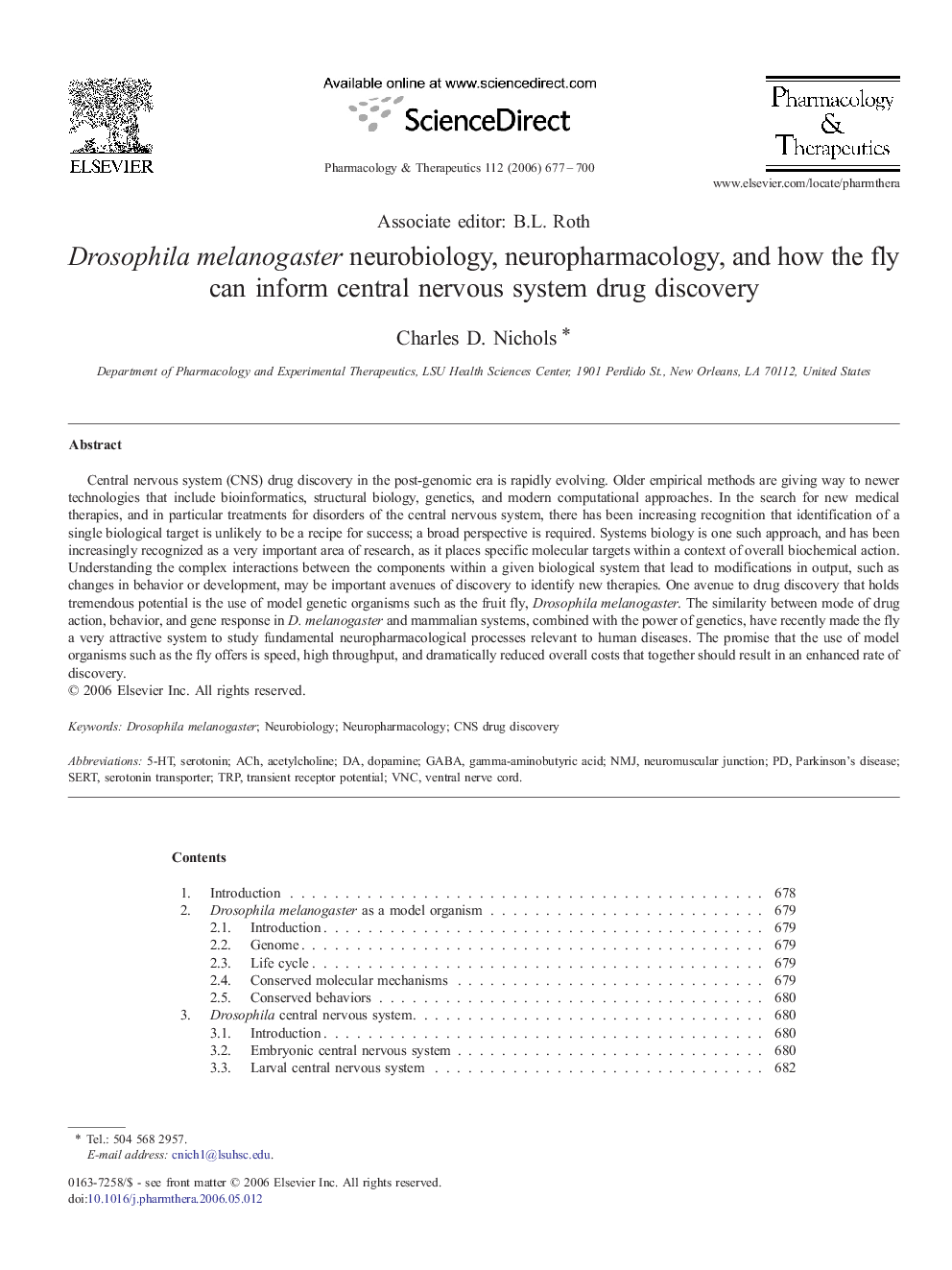| Article ID | Journal | Published Year | Pages | File Type |
|---|---|---|---|---|
| 2564033 | Pharmacology & Therapeutics | 2006 | 24 Pages |
Central nervous system (CNS) drug discovery in the post-genomic era is rapidly evolving. Older empirical methods are giving way to newer technologies that include bioinformatics, structural biology, genetics, and modern computational approaches. In the search for new medical therapies, and in particular treatments for disorders of the central nervous system, there has been increasing recognition that identification of a single biological target is unlikely to be a recipe for success; a broad perspective is required. Systems biology is one such approach, and has been increasingly recognized as a very important area of research, as it places specific molecular targets within a context of overall biochemical action. Understanding the complex interactions between the components within a given biological system that lead to modifications in output, such as changes in behavior or development, may be important avenues of discovery to identify new therapies. One avenue to drug discovery that holds tremendous potential is the use of model genetic organisms such as the fruit fly, Drosophila melanogaster. The similarity between mode of drug action, behavior, and gene response in D. melanogaster and mammalian systems, combined with the power of genetics, have recently made the fly a very attractive system to study fundamental neuropharmacological processes relevant to human diseases. The promise that the use of model organisms such as the fly offers is speed, high throughput, and dramatically reduced overall costs that together should result in an enhanced rate of discovery.
